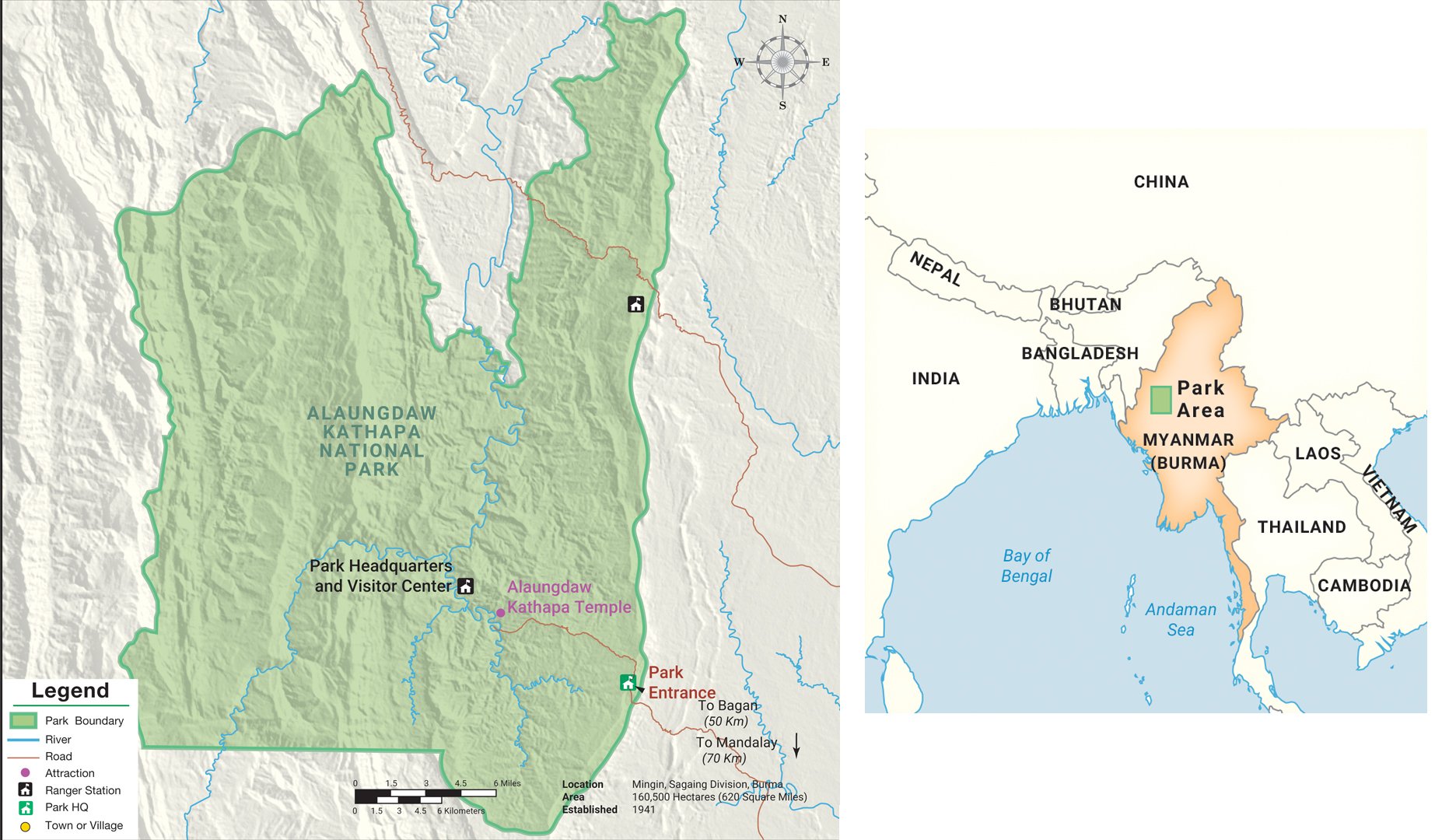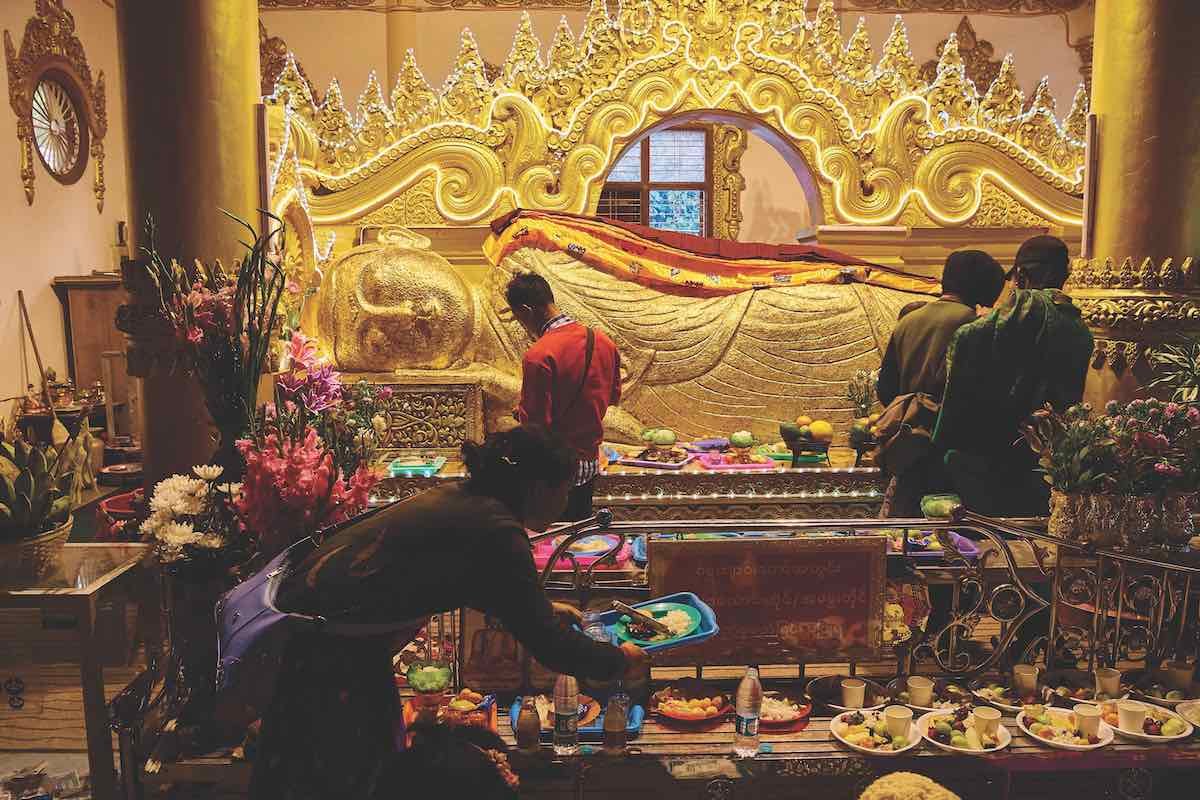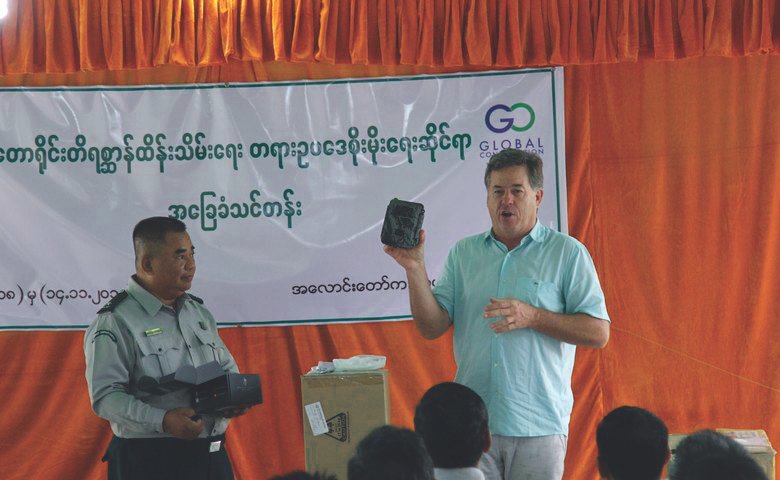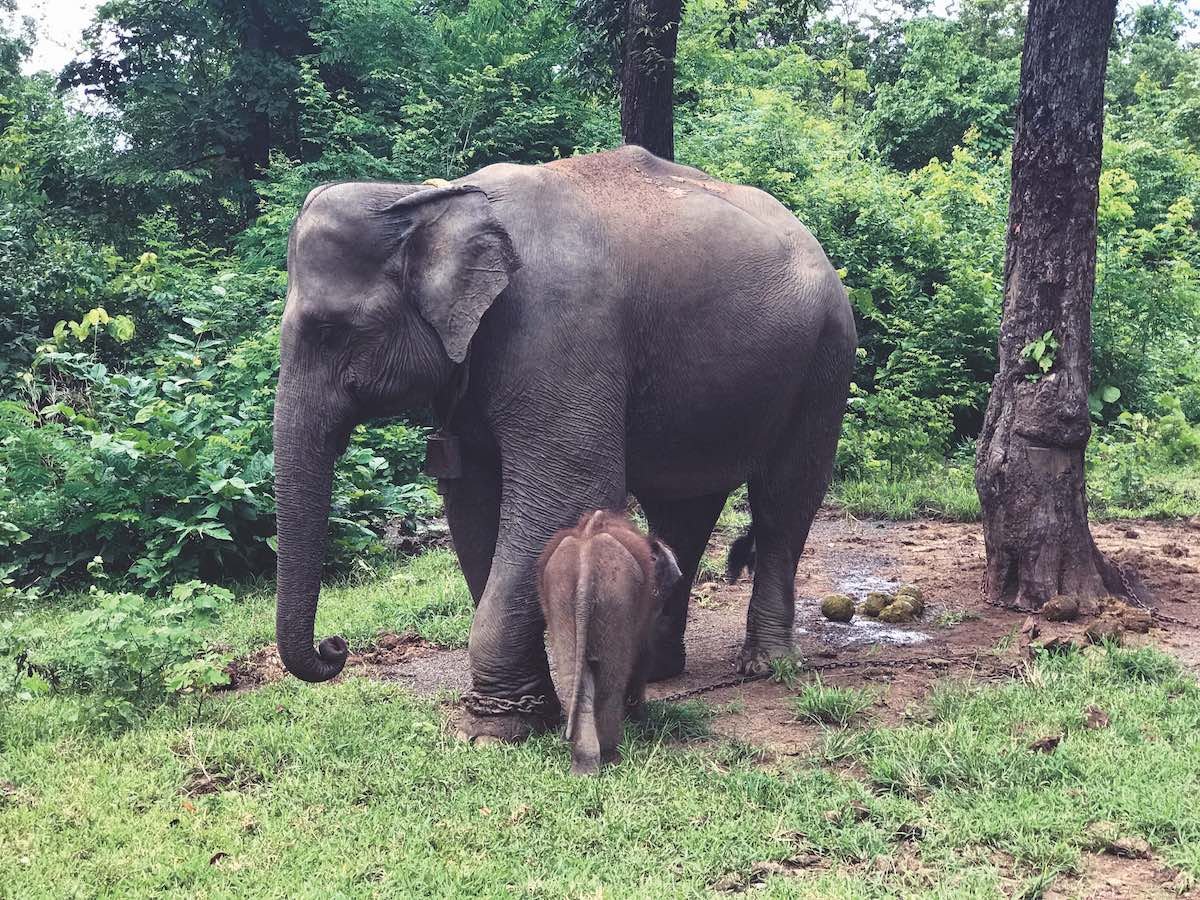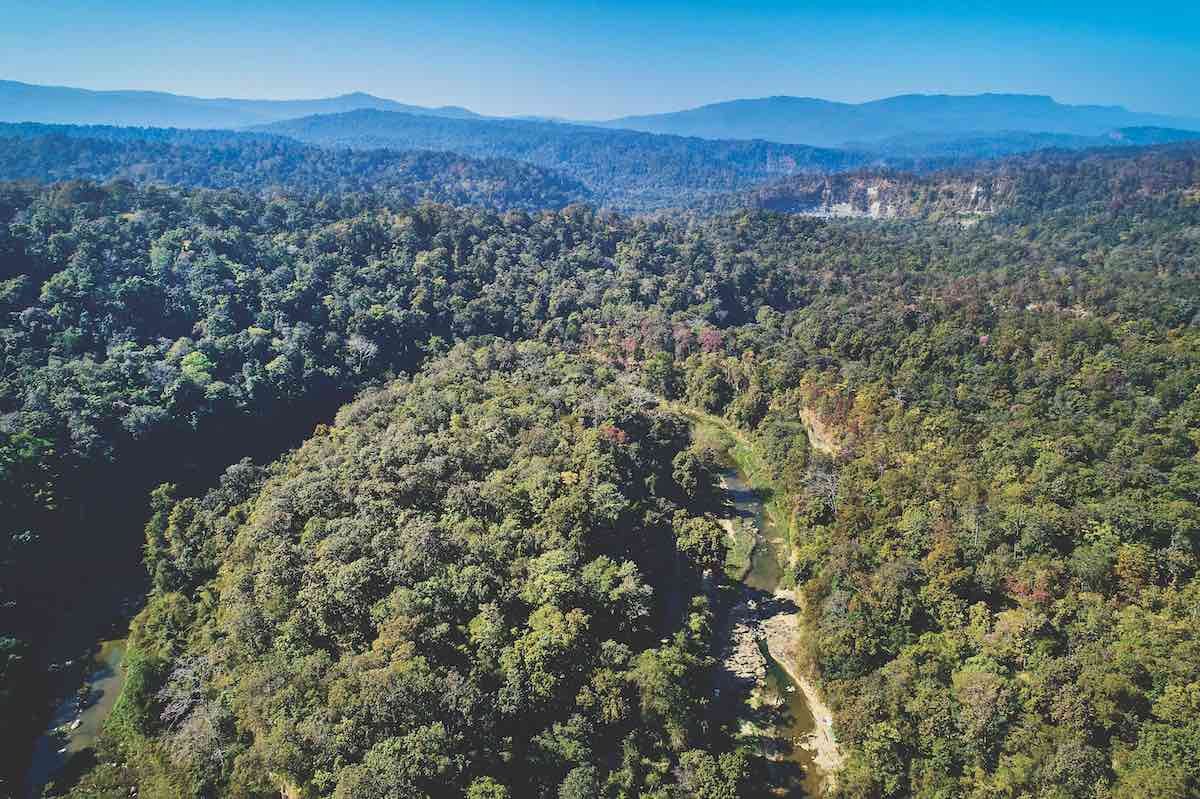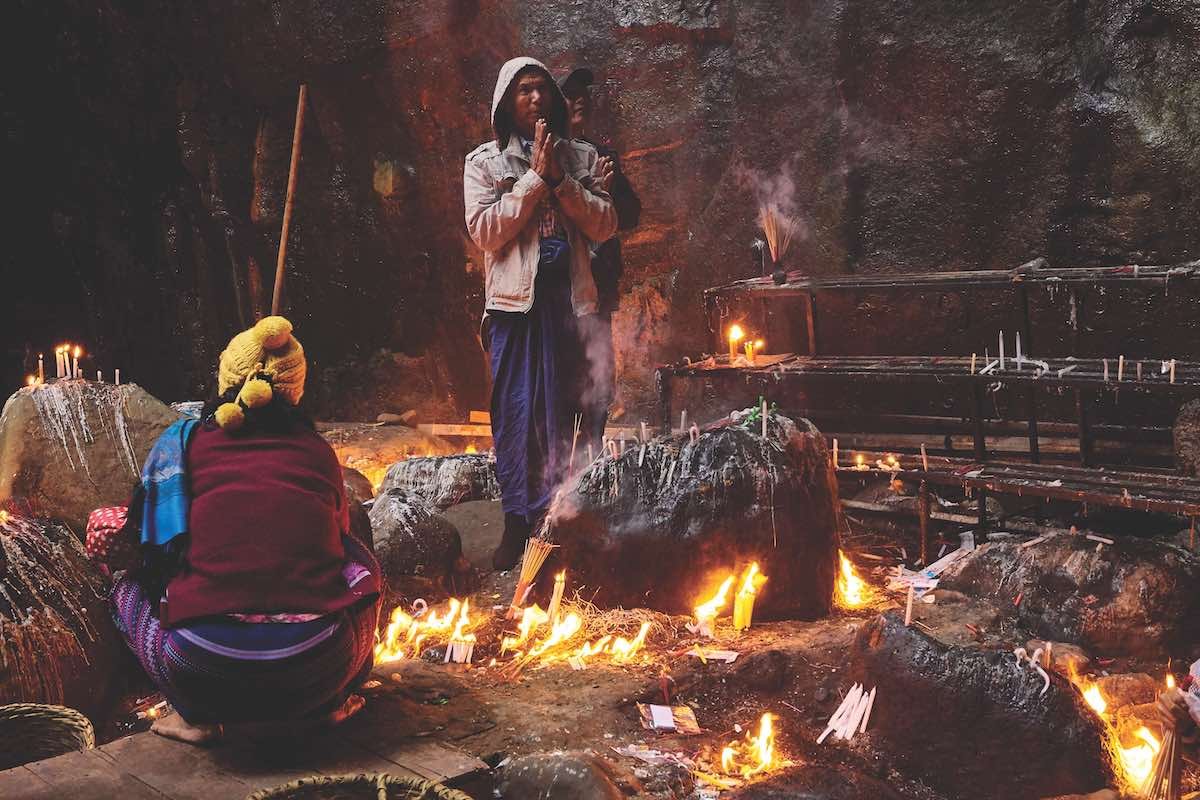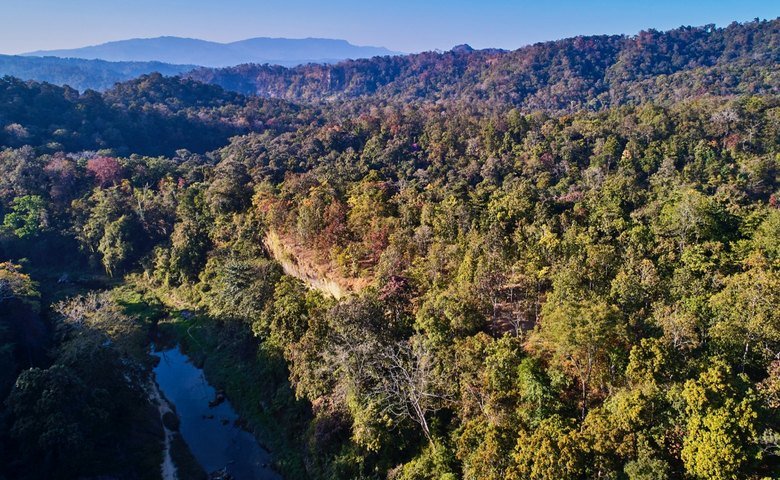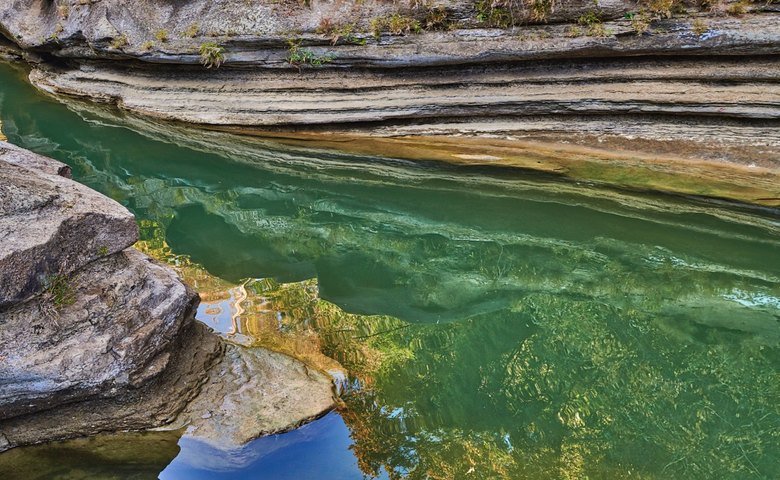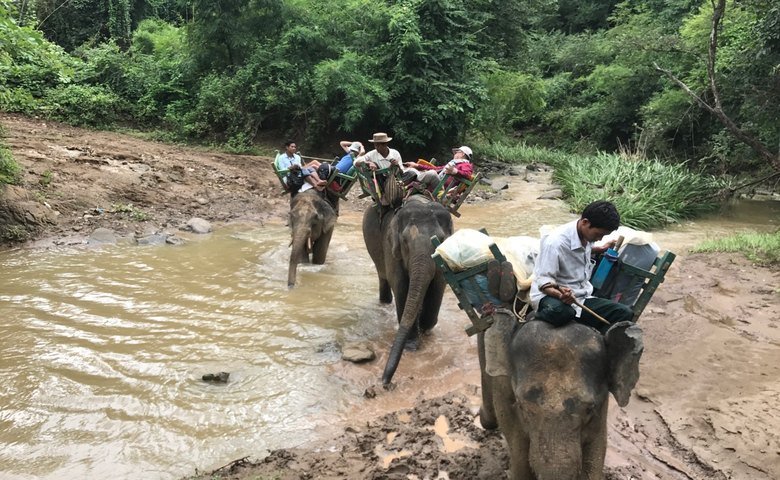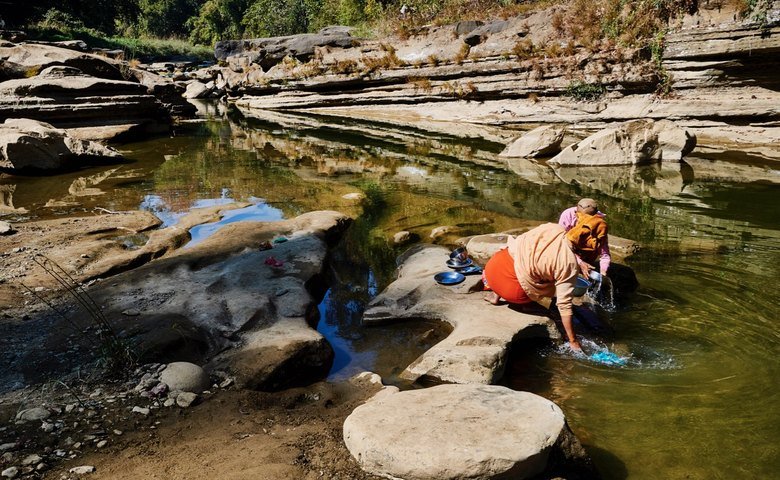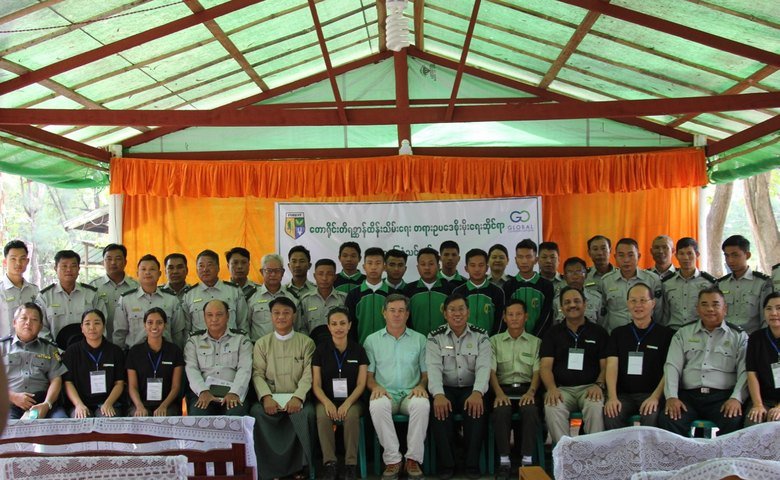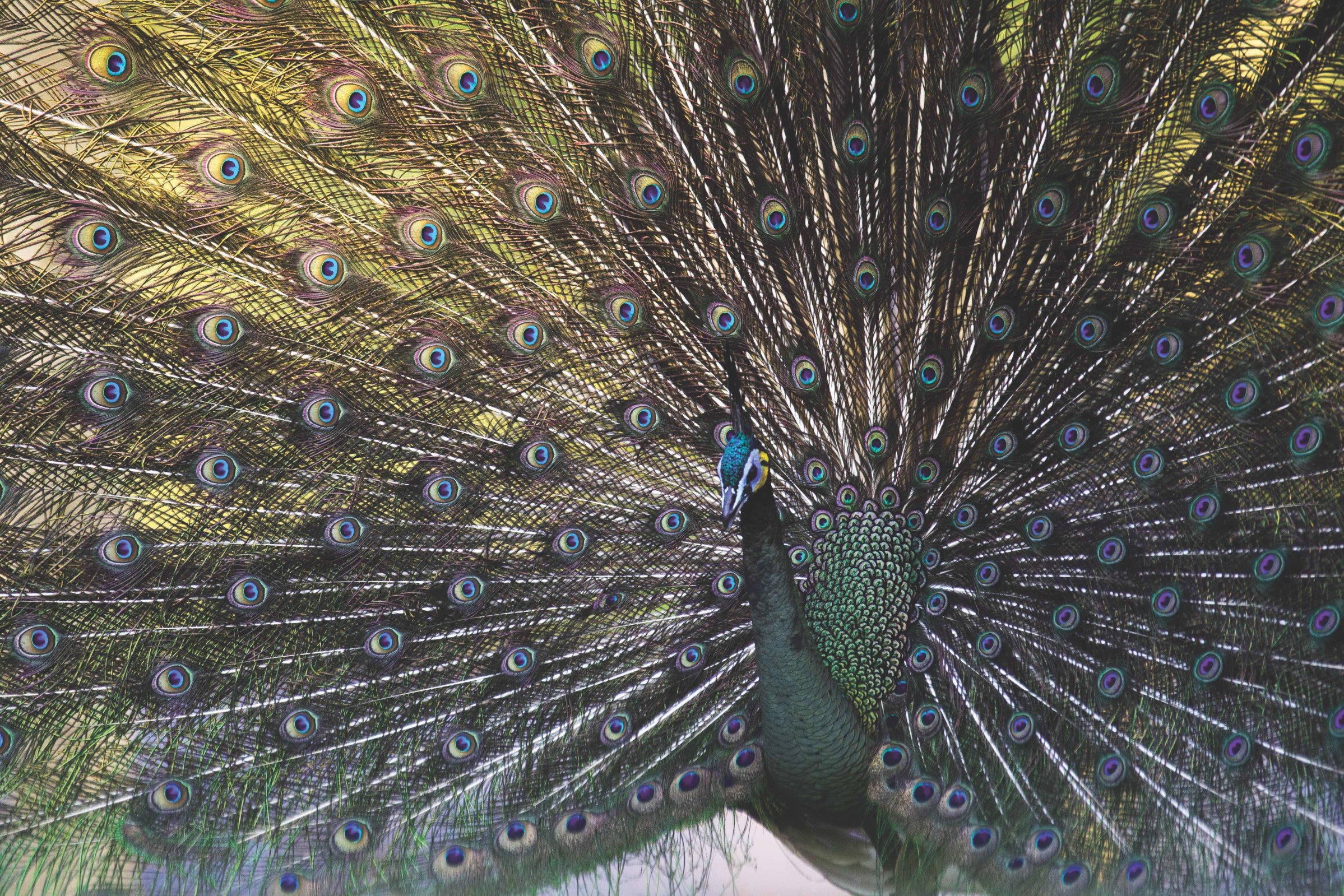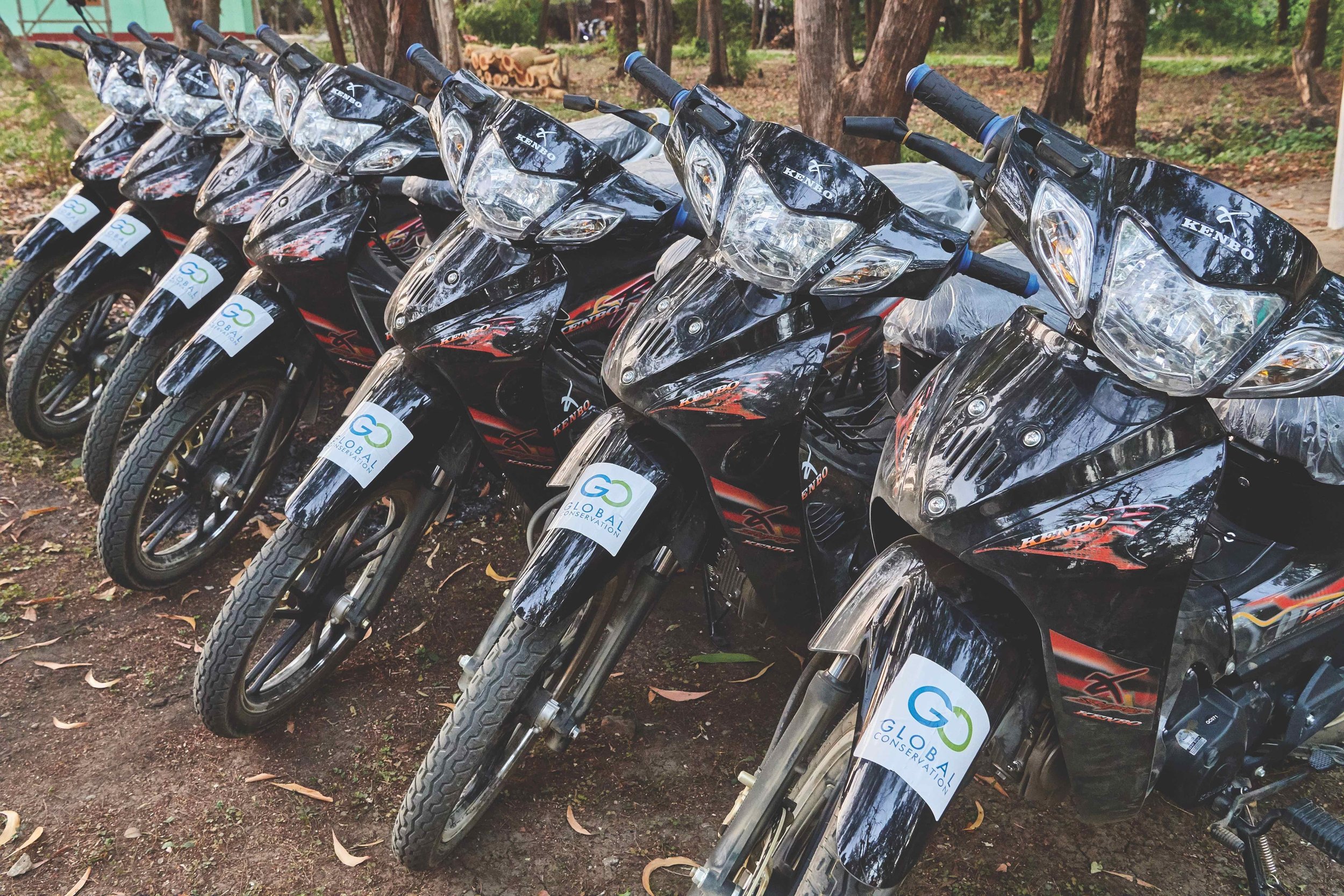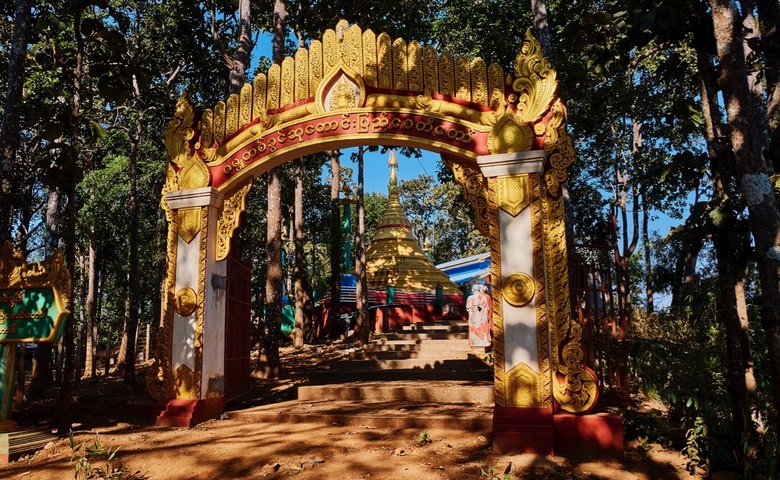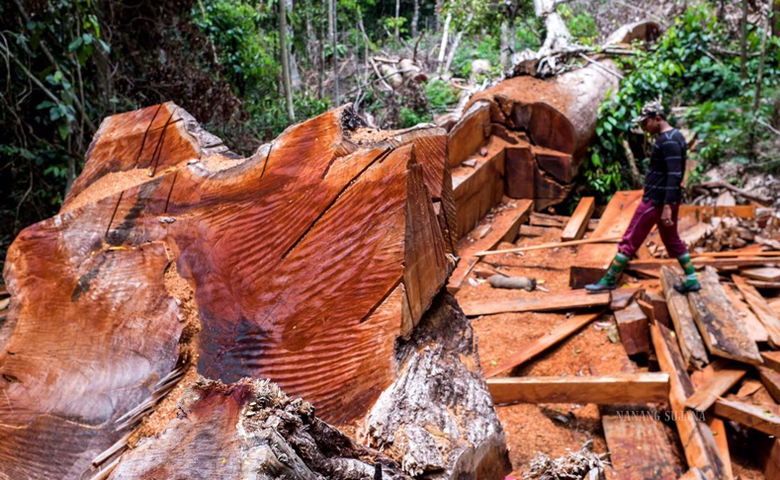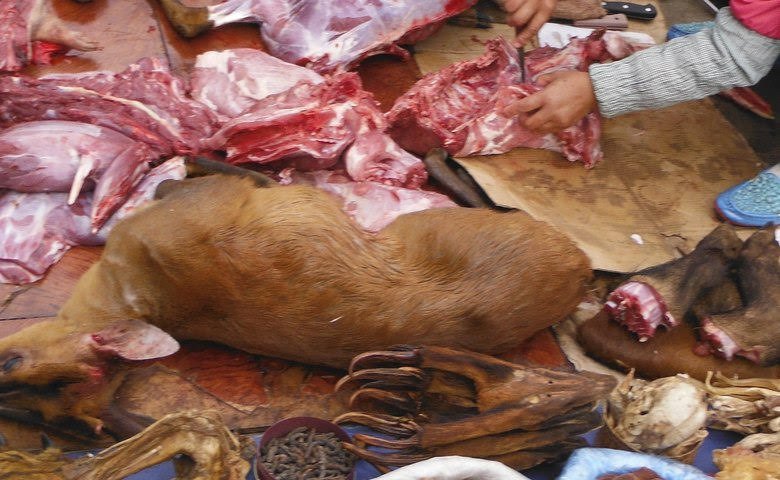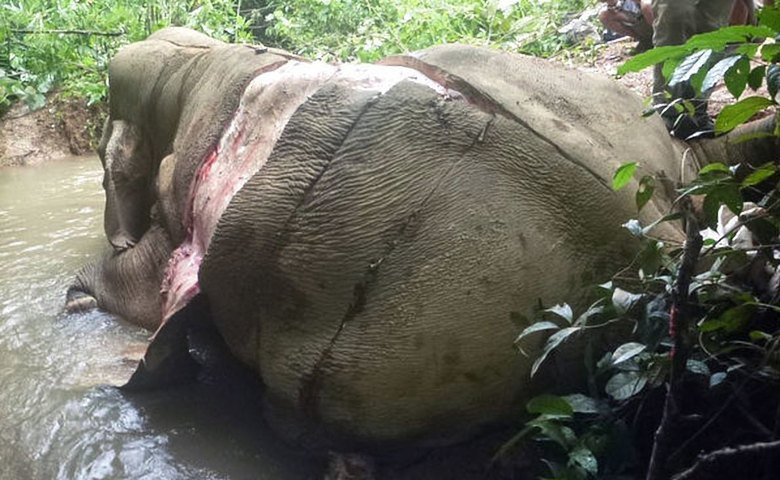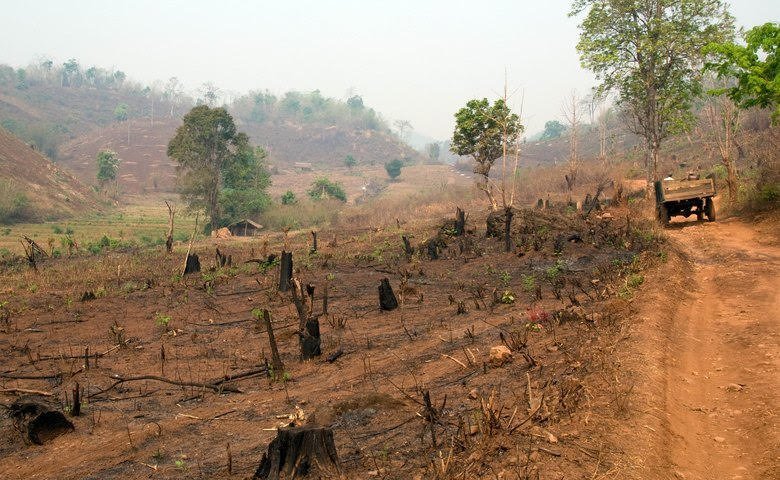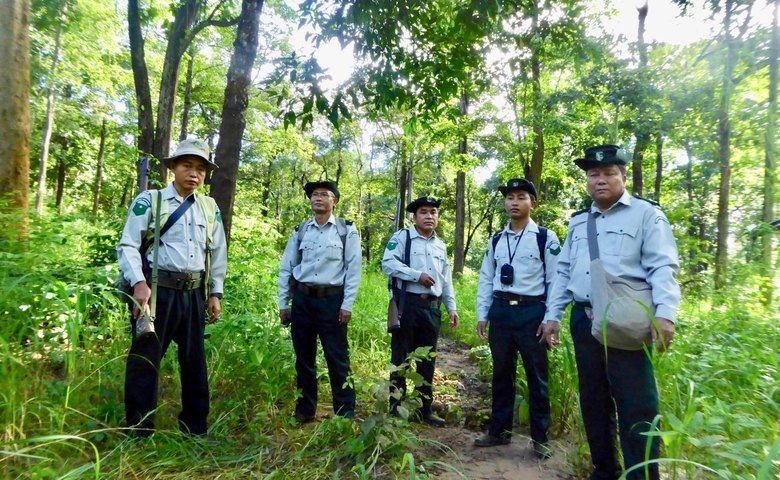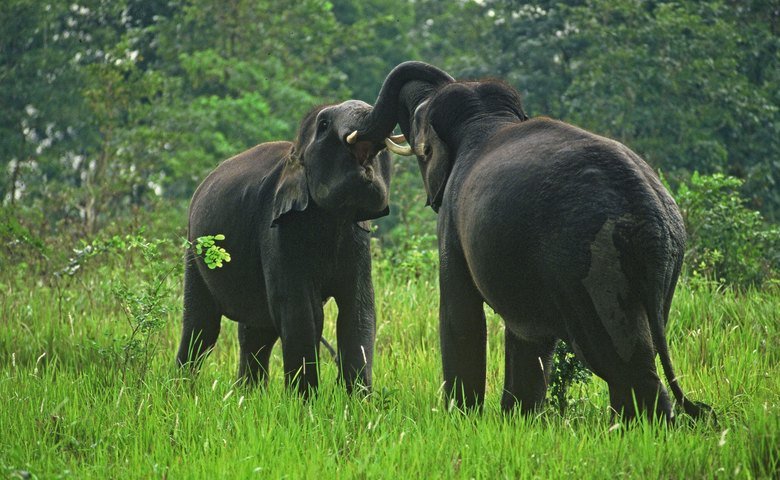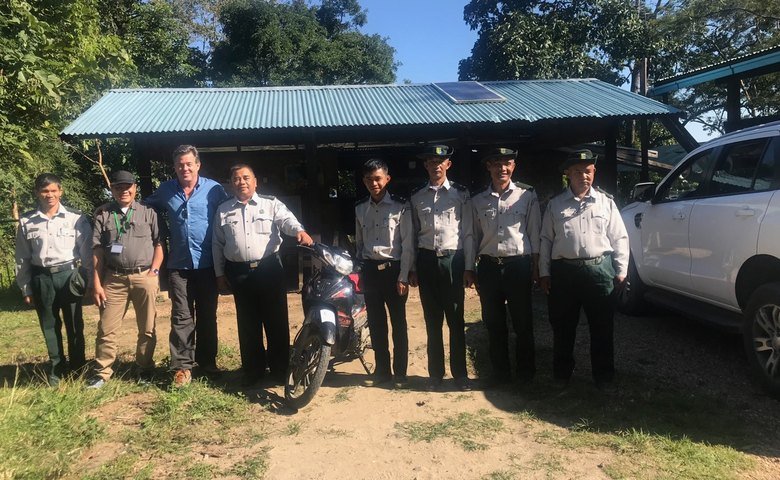Alaungdaw Kathapa National Park, Myanmar
OVERVIEW
Imagine a deep forest where elephants crack the blood-red branches from Siamese rosewood trees, where leopards stalk gibbons through the canopy, where dragon-like mammals called pangolins rustle through the undergrowth, and where the ghosts of rhinos roam.
This ancient Buddhist sacred burial site is Alaungdaw Kathapa National Park (AKNP), the jewel of Myanmar and that country’s oldest and largest national park at 160,500 hectares. GC is working to protect it.
SIZE
160,500 Hectares
GOAL
$400,000
VISITORS BY 2025
250,000
Introduction
Imagine a deep forest where elephants crack the blood-red branches from Siamese rosewood trees, where leopards stalk gibbons through the canopy, where dragon-like mammals called pangolins rustle through the undergrowth, and where the ghosts of rhinos roam. Here, the Petpa, Patolon, and Taungdwin rivers are born among the emerald trees. These forests flow over rolling mountains and plunge down thousand-foot cliffs that protect this place like a fortress. This is Alaungdaw Kathapa National Park (AKNP), the jewel of Myanmar and that country’s oldest and largest national park at 160,500 hectares.
Cultural Heritage
Not only a refuge to the animals that live here, AKNP also draws about 150,000 Buddhist pilgrims that visit each year during the religious festival from January to April. They come to worship the holy remains of Lord Alaungdaw Kathapa, Buddhist royalty, which are secured in a cave deep within the park. The forests here in this national park, the only park in Asia with a famous Buddhist religious site, vibrate with life and spirituality.
Natural Heritage
The park protects the largest remaining tracts of intact forest in the country, harboring mixed deciduous forest, evergreen forest and pine forest. These woodlands contain at least 165 tree species and 39 known species of medicinal plants, as well as a nationally important population of leopards, banteng and Asian elephants. Other threatened species that are protected by this park include gaur, sun bears, Asian black bears, dholes (Asian wild dogs), Sambar deer, hog badgers, and Malayan giant squirrels.
Alaungdaw Kathapa National Park is the crown jewel of central Myanmar, boasting pristine forests, trekking trails into diverse ecosystems, majestic mountains, and beautiful rivers.
Saving AKNP
To help secure the future of this unique place, Global Conservation has stepped in as the first major conservation investor in more than 20 years; we signed an agreement with the Myanmar Ministry of the Environment in 2018. This year, the Myanmar Forest Department will begin to deploy Global Park Defense in AKNP, and Global Conservation will work to have AKNP listed as a Natural and Cultural UNESCO World Heritage Site.
The challenges will be great, as the dangers to AKNP are many. Myanmar faces some of the highest deforestation rates of any country in the world, having lost over 12% of its forest cover in the past 10 years.
Myanmar’s natural areas are all in danger, but AKNP is a wilderness stronghold: the massive cliffs that form 60% of its boundary make it one of Myanmar’s only national parks with potential for long-term protection.
Still, AKNP is under threat from wildlife poaching and illegal logging, including illegal clearing of the final fragments of forest in the park’s buffer zone. The buffer zone has already lost more than half of its forest, restricting the migration of wildlife. The global trade in one of AKNP’s trees, Siamese rosewood—also known as bloodwood—is thought to be even more lucrative than the trade in elephant ivory.
Wildlife habitats vanish as loggers chainsaw forests in search of the rare bloodwoods for export to China, where they will be reduced to furniture.
The Sumatran rhino, almost extinct throughout Myanmar, has already disappeared from the park. The growing trade in elephant skin threatens the future of that megafauna species in Myanmar, as it makes all elephants, not just those with large tusks, a valuable commodity. Even orchids are threatened in AKNP by the illegal trade in ornamental plants.
For the past 20 years, AKNP has been on its own, battling these illegal activities with a small team of just 20 rangers and no vehicles. Consequently, the buffer zone has already lost 60% of its forest cover; what remains is highly fragmented.
This is why Global Conservation is investing in critical Global Park Defense technologies and systems, as well as the training needed to effectively protect core wildlife habitats from illegal logging and wildlife poaching.
Strengthening Law Enforcement and Penalties
Working with the Myanmar Forest Department and the Chief Minister of Sagaing Region, Global Conservation is establishing a new command center, deploying cellular trailcams, providing trucks and motorcycles, and supporting SMART ranger patrols that will increase the effectiveness of forest and wildlife protection across 400,000 hectares of the park and its surroundings.
The Government of Myanmar passed two new laws in May 2018, dramatically increasing jail time from 3 years to 10 years and implementing large fines for wildlife poaching. The laws similarly increased penalties for illegal logging. These new laws should deter would-be offenders from entering AKNP for illegal activities. These new penalties are a powerful tool for our PROTECT ranger teams and law enforcement.
Key Objectives
Global Conservation has been working with its Partners in Conservation since November 2018 to achieve seven key goals in Alaungdaw Kathapa National Park:
1.
Deploy Global Park Defense systems including long-range thermal cameras and a cellular trailcam network.
2.
Build a new command center with advanced park-wide communications, including high-speed internet, to enable planning, briefing/debriefing, and SMART analysis and assessment.
3.
Implement SMART patrol protection and provide PROTECT ranger training.
4.
Train and equip rangers and newly hired community guardians.
5.
Develop a national park master plan for sustainable ecotourism, including creation of a visitor center, lodging, and park headquarters, and enabling road and trail access. Tourism will offer the opportunity for hundreds of full-time jobs for local community members.
6.
Assist in the nominationof AKNP for UNESCO World Heritage designation as a Mixed Natural and Cultural Site.
7.
Support planning needed to increase the size of Alaungdaw Kathapa National Park by adding adjacent forestry concessions.
Together with Myanmar’s leaders, Global Conservation aims to preserve this park’s mountains, rivers, forests, and trekking trails that venture into eight diverse ecosystems. Thereby, we can ensure that AKNP’s strong populations of unique wildlife like Asian elephants, banteng, leopards, gibbons, and pangolins persist long into the future.
Proposed Nomination for UNESCO World Heritage Status
AKNP has an excellent chance for nomination by the UNESCO World Heritage Committee due to its universal value to mankind as both a Cultural and Natural Heritage Site. Very few places in the world can claim this distinction, and very few of those boast large tracts of intact tropical rainforest and wildlife habitat.
World Heritage designation would increase global recognition and international tourism for AKNP.
Nomination for World Heritage status will be based on the following criteria of Universal Value, Integrity, and Authenticity:
Universal Value
The complex of structures within the archaeological conservation area includes the main temple and a sacred cave. This cave is the resting place of Lord Alaungdaw Kathapa, one of the Buddha's most famous disciples. His burial here is marked by an inscription on a pillar, making this one of the most holy and significant places for the Buddhist faith.
The remains of the Lord Alaungdaw Kathapa and related archaeological artifacts dating from the 3rd century BC to the 15th century AD provide critical early evidence about the nature of Buddhist pilgrimage centers.
Integrity
The integrity of AKNP has been achieved by preserving the natural forests and ecosystems of the park as well as the archaeological remains that give the property its outstanding universal value. The most significant attributes and elements of the property have been preserved, and the buffer zone gives the property a further layer of protection.
A small group of monks care for the shrine of Alaungdaw Kathapa. They coordinate with authorities from the Forest Department and Nature and Wildlife Conservation Division to educate visitors about conservation and wildlife.
The entire property, including the buffer zone, is owned by the government of Myanmar. It is managed by the Shrine Committee of Alaungdaw Kathapa and the AKNP authorities, and therefore there is little threat of development or neglect. However, the effects of heavy seasonal pilgrimage to the shrine have been identified as a threat to the integrity of the property.
Authenticity
The authenticity of the archaeological remains has been confirmed through a series of excavations since the discovery of the site in the 15th century. The long-term challenges for the protection and management of the property are to control the impact of visitors, and to guard against natural impacts like humidity.
A Model for National Park Protection and Sustainable Development in Myanmar
AKNP is a perfect candidate for a model national park and the ideal place to have a Center of Excellence for National Parks in Myanmar. AKNP has no villages within the park, is not in an autonomous region or independent state, and is one of the only parks under the full authority of the Myanmar government.
As a training base for other parks and protected area managers, we hope to showcase Global Park Defense in AKNP to help fight illegal logging, wildlife poaching and illegal land clearing across the country.
Species Facing Extinction
In Alaungdaw Kathapa National Park, we are working with our partners to protect the clouded leopard and Sunda pangolin.
Global Conservation is funding a multi-year Species Population Baseline study for Sunda pangolins to ascertain progress in Park and Wildlife Protection from our investments in Global Park Defense in AKNP.
So few of these mysterious animals remain that scientists have been unable to estimate their population. Sunda pangolins are one of the world's most trafficked mammals. Over a million pangolins worldwide are estimated to have been poached from the wild since 2000, and they are predicted to decline by an additional 80% within the next two decades if they are not protected. GC is working across five national parks and World Heritage Sites in Asia to help save this critically endangered species.
Partners in Conservation
Alaungdaw Kathapa National Park Authorities
Sagaing Provincial Government


